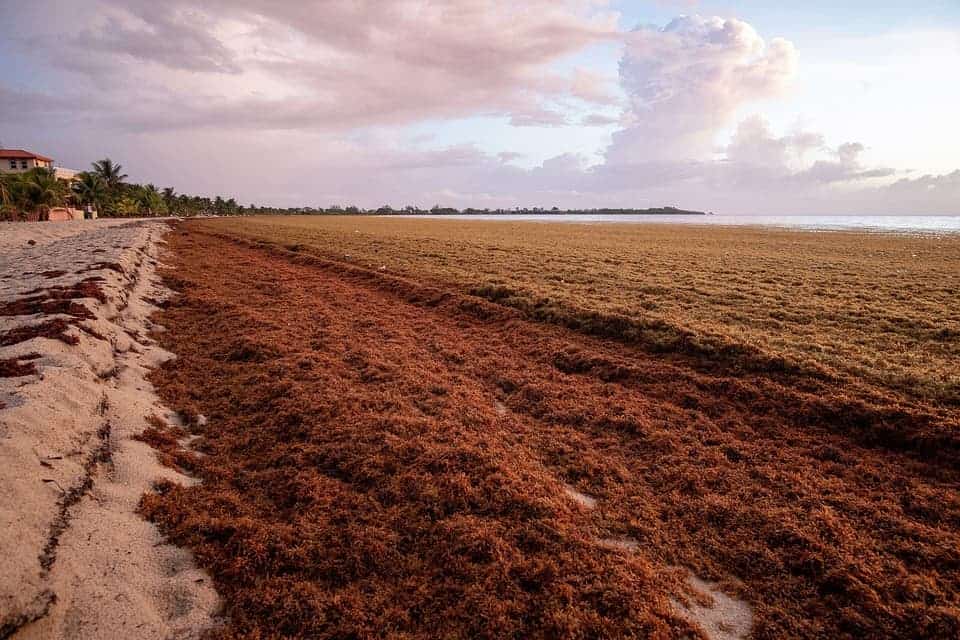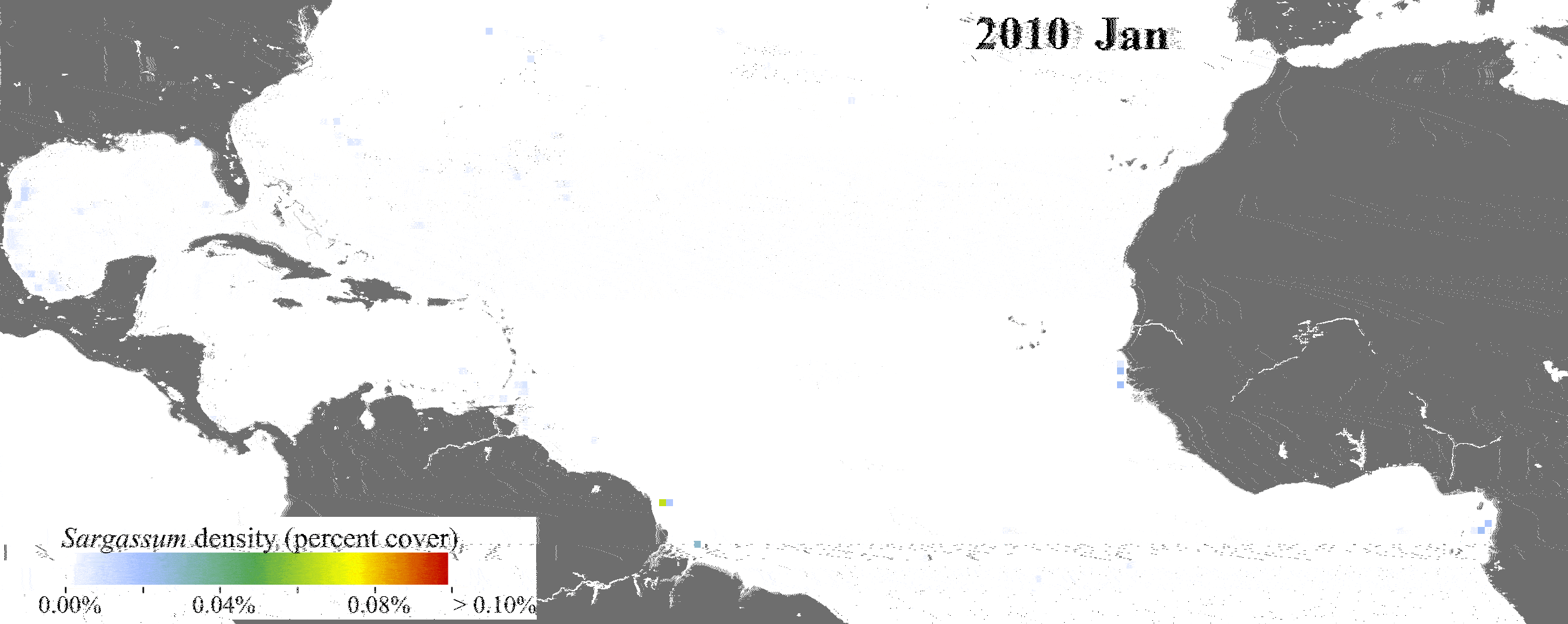Researchers at the USF College of Marine Science report discovering the largest bloom of macroalgae in the world — the Great Atlantic Sargassum Belt (GASB).
Based on computer simulations, the team reports that the GASB’s shape has formed in response to ocean currents. This brown macroalgae belt blankets the surface of the tropical Atlantic Ocean from the west coast of Africa to the Gulf of Mexico, and formed last year as 20 million tons of algae floated in surface waters and wreaked havoc on shorelines around the tropical Atlantic, Caribbean Sea, Gulf of Mexico, and the east coast of Florida.
All the algae
The seaweed, the team reports, grows seasonally in response to two nutrient inputs, one natural and one human-derived. The Amazon River’s spring and summer discharge floods the ocean with fresh nutrients; this discharge may have increased in recent years due to deforestation and fertilizer use in the area. In the winter, upwelling off the West African coast delivers nutrients from deep waters to the ocean surface where the Sargassum grows.
“The evidence for nutrient enrichment is preliminary and based on limited field data and other environmental data, and we need more research to confirm this hypothesis,” said Dr. Chuanmin Hu of the USF College of Marine Science, who led the study and has studied Sargassum using satellites since 2006.
“On the other hand, based on the last 20 years of data, I can say that the belt is very likely to be a new normal,” said Hu.
Hu’s team used data from NASA’s Moderate Resolution Imaging Spectroradiometer (MODIS) between 2000-2018. They also analyzed fertilizer consumption patterns in Brazil, Amazon deforestation rates, Amazon River discharge, and two years of nitrogen and phosphorus measurements taken from the central western parts of the Atlantic Ocean (among other ocean properties) to see whether they linked with the blooms.
Based on the data, they report a possible shift in the pattern of these blooms since 2011. Before this point, most of the pelagic Sargassum in the ocean was clumped up around the Gulf of Mexico and the Sargasso Sea (on the western edge of the central Atlantic Ocean). After 2011, Sargassum populations made big appearances in places the algae hadn’t been encountered before, such as the central Atlantic, growing in massive blobs that suffocated local life along the shoreline and entangled shipping. Some countries, such as Barbados, declared a national emergency because of the toll this once-healthy seaweed took on tourism.
The ocean’s chemistry must have changed in order for the blooms to get so out of hand,” Hu said.
Sargassum reproduces vegetatively (i.e. from a parent plant or fragments), and the team believes there are several ‘initiation zones’ from which it propagates into the wider Atlantic. They also explain that the plant grows faster when environmental conditions are favorable. The results, while preliminary, do show a strong correlation between the recent boom in Sargassum and increases in deforestation and fertilizer use since 2010.
Key factors for bloom formation, the team found, are:
- A large seed population in the winter left over from a previous bloom.
- Nutrient input from West Africa upwelling in winter.
- Nutrient input in the spring or summer from the Amazon River.
- In addition, Sargassum only grows well when salinity is normal and surface temperatures are normal or cooler.
The bloom in 2011 was caused by rich Amazon discharge from previous years compounding with upwelling in the eastern Atlantic and river discharge on the western Atlantic. Major blooms occurred yearly after this, with the exception of 2013, as all the ingredients on the list were present. No bloom occurred in 2013 because the seed populations measured during winter of 2012 were unusually low, said first author Dr. Mengqiu Wang. The first large bloom didn’t occur in 2010 because heavy rains in 2009 reduced the overall salinity in the Amazon discharge area and because surface temperatures were higher than usual.
“This is all ultimately related to climate change because it affects precipitation and ocean circulation and even human activities, but what we’ve shown is that these blooms do not occur because of increased water temperature,” Hu said.
“They are probably here to stay.”
The team reports that what we’ll likely see in the future is a recurring pattern of Sargassum blooming in late January to early April, which will develop into a Great Atlantic Sargassum Belt up through to July. After this, the bloom will increasingly dissipate until winter.
“We hope this provides a framework for improved understanding and response to this emerging phenomenon,” Hu said. “We need a lot more follow-on work.”
The team, however, cautions that predicting future blooms and their evolution is tricky because they depend on a large palette of factors that are hard to predict.
The paper “The great Atlantic Sargassum belt” has been published in Science.











